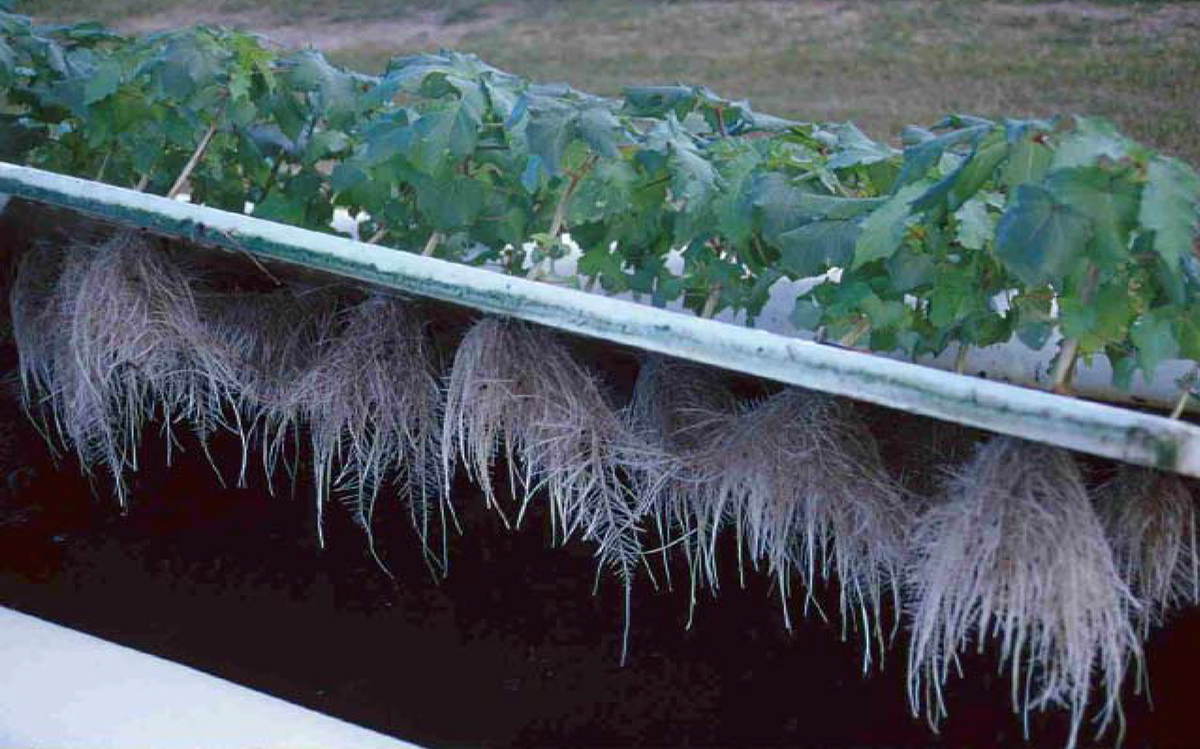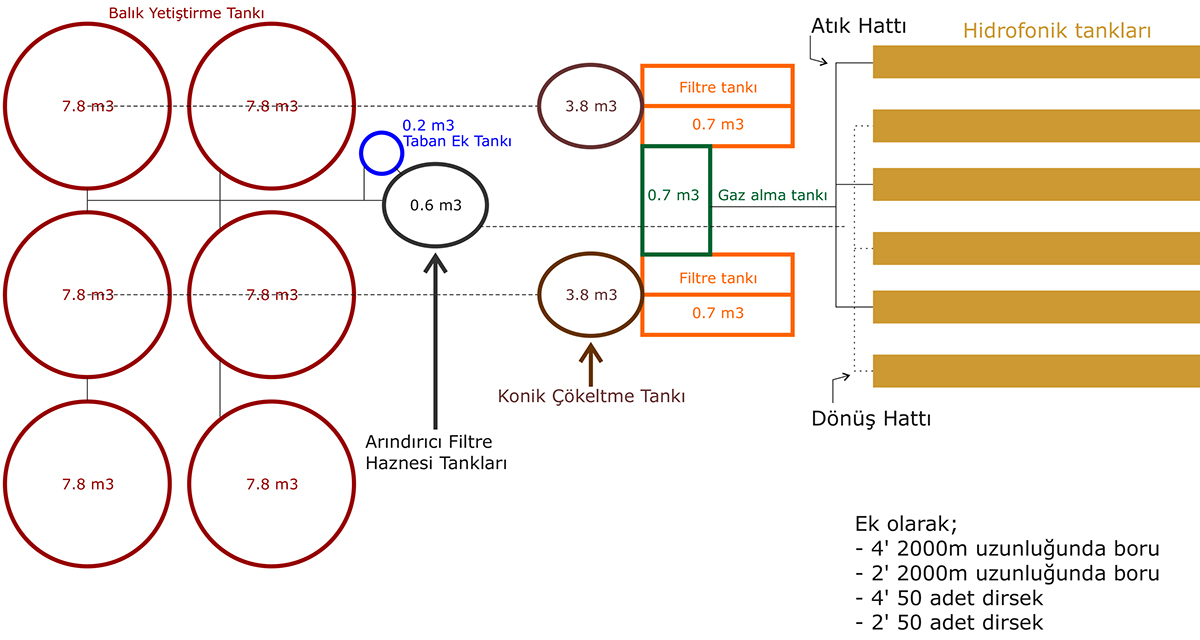

This project was done in 2013with
Mersin University - Agricultural
Experiment Station.
Sea bream farms produce a lot of
waste water. In general, this dirty
water is usually discharged to the sea.
This project suggests that by filtering dirty water produced, clean water for strawberry farming can be created.
Fish provide most nutrients required for plants. Plants use these nutrients to pro¬duce crops. Hydroponic
component serves as a biofilter.
Hydroponic plants extend water usage and reduce the discharge to the
environment. Integrated systems
require less water quality monitoring than individual systems.
Profit potential was increased in this project due to free nutrients provided for plants, lower water requirement, elimination of separate biofilter, less water quality monitoring and shared costs for operation and infrastructure.



Treatment Processes
Air stones, 88 in rearing tanks, 144 in hydroponic tanks. Solids removal,
three times daily from clarifier,
filter tank cleaning one or two times weekly. Continuous degassing of
methane, CO2 , H2S, N2.
Denitrification in filter tanks. Direct uptake of ammonia and other nutrient by plants. Nitrification in hydroponic tank. Retention time: rearing tank, 1.37 h; clarifier, 20 min, hydroponic tanks, 3 h
Important Principles
Optimum feeding rate, 60 - 100 g/day/m2 of plant growing area prevents nutrient accumulation or deficiency.
Slow removal of solids increases
mineralization.
Frequency of filter tank cleaning
controls nitrate levels through
denitrification.

